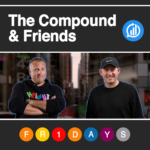In the high-stakes world of marketing, understanding your consumers is paramount. But what if I told you that some of the most common marketing strategies could be slowly killing your brand? Recent advances in neuroscience have revealed that four key consumer responses, all occurring within a fraction of a second, can make or break your marketing success.
In an age where 82% of consumers actively ignore ads, it’s a wonder that brands survive at all. The digital landscape is a battlefield, and the weapons of choice are attention, emotion, cognition, and memory. Misuse any of these, and you’re effectively killing your brand.
The Gatekeeper: Attention
Attention is the gatekeeper of all ads. It’s a power that operates within the blink of an eye, even as briefly as within the first 100 milliseconds of ad-watching. Yet, despite its speed, it’s astonishingly selective. For instance, 50% of all ads place the brand in the bottom right corner or at the end of a commercial, but less than 5% of viewers actually notice it there.
Consider the case of the World Wildlife Foundation. They continuously create highly visually appealing ads, but they constantly keep the brand in the bottom right corner, making less than 5% of viewers actually notice who the sender is. With the ads being highly metaphorical, it is hard to get the message across if people don’t see the brand.
The solution? Understand the visual hierarchy of your ad and ensure your brand isn’t sidelined. Place your brand where it can be easily seen and remembered. Build the brand as a natural part of the ad narrative.
The Relevance Barometer: Emotion
Emotion is the relevance barometer of your ad. A positive emotional response can boost your brand impact by 400%, but fail to produce an emotional “bump” within the first 400 milliseconds, and your ad will likely be ignored. In fact, excessive ad intrusion can even trigger negative emotions.
Take the case of Sony Bravia. They created an ad where thousands of colorful balls were jumping down San Francisco streets. Everybody loved the beautiful scenery, and both ad liking and ad memory were high, but brand memory was extremely low. The take-home message: Ad liking and emotions can be at the cost of brand communication.
The key is to create ads that resonate emotionally with consumers, making them feel seen, understood, and valued, and naturally creating a bridge to the brand. Strive to create a positive emotional connection that enhances brand affinity, and build the brand as a natural part of the storyline.
The Information Overload: Cognition
Cognition, particularly cognitive load, is another crucial factor. It’s a delicate balance: too much information can overwhelm and confuse viewers, causing them to look away. This can have a negative halo effect on your brand.
Consider the series of studies done by Neurons for Ericsson and Vodafone. It was found that ads that were seen in the context of mobile delays and noise led to negative brand emotions, meaning that negative brand experiences, even when by proxy, can have a negative halo effect on the brand.
The antidote? Keep it simple, clear, and contextually relevant. Less is more when it comes to information in ads. In the increasing exposure and pace of digital ads, cognitive load is already high. Build simple messages with this in mind.
The Forgotten Hero: Memory
Finally, there’s memory. Is your ad remembered at the cost of the brand? Does it bridge the right associations to the brand? It’s a sobering fact that across multiple studies, less than 1% of all ads are remembered.
Consider the use of influencers. The use of influencers is highly popular but also contested. In one series of ads for Intel, world-class swimmer Michael Phelps starred in Intel ads, but people only remembered Phelps but not the Intel brand.
The goal is to create ads that not only stick in the consumer’s memory but also reinforce the brand’s identity and values. Ensure that your ad and brand work in harmony, not in competition.
Conclusion
These four powers—attention, emotion, cognition, and memory—can make or break your brand. But how can you harness them effectively? The answer lies in the ability to test and iterate rapidly. Recent advances in neuroscience, particularly in neuromarketing and consumer neuroscience, have shown that the four powers can be measured, understood, and used to improve your assets.
But these methods are typically expensive, time-consuming, and can be hard to translate directly to actions. Recent advances in online implicit measures and AI solutions now allow marketing teams to quickly test and iterate on their designs and campaigns. In this way, it is becoming clear that a new breed of neuro+AI solutions dramatically boosts the way that marketing teams operate, improving ROI by over 20% and reducing time costs by more than 20%. Indeed, by understanding, predicting, and addressing these key consumer responses, you can not only avoid killing your brand but also breathe new life into it.








